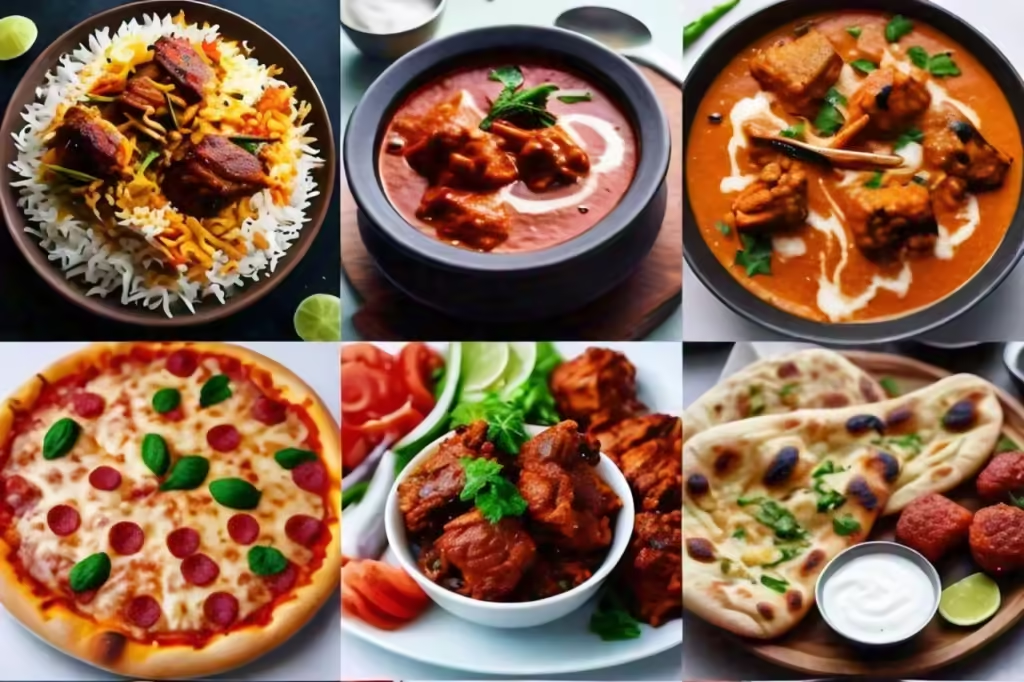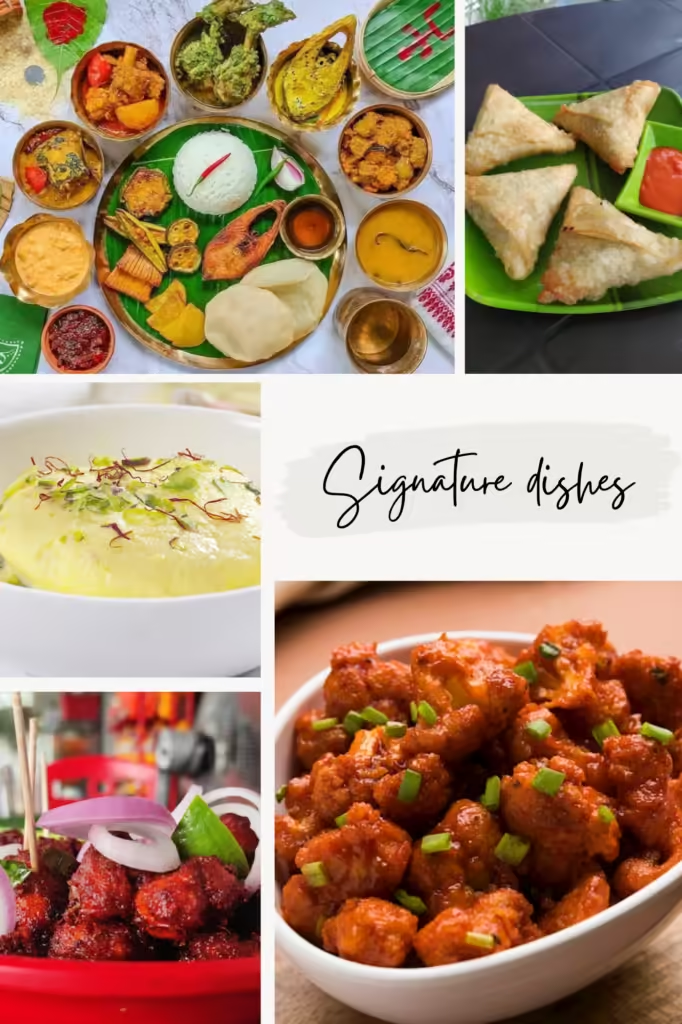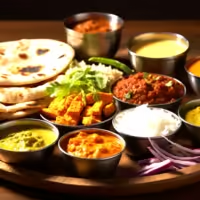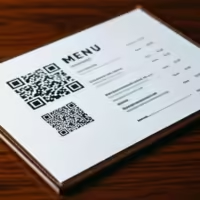
Posted by Reviewtale
- Feb 3, 2025
- 456
- 0
Best Dishes & Drinks for Your Brand: Boost Customer Engagement
Table of Contents
- Introduction
- Understanding Your Brand Identity
- Analyzing Your Target Audience
- Conducting Market Research
- Selecting Signature Dishes & Beverages
- The Role of Storytelling to Boost Customer Engagement in Menu Selection
- Incorporating Seasonal and Local Ingredients
- Optimizing Presentation and Plating
- Enhancing Customer Experience Through Unique Offerings
- Leveraging Digital Marketing for Promotion
- Creating Engaging Content Around Your Signature Dishes
- Using Data to Improve Menu Performance
- Avoiding Common Mistakes in Menu Curation
- Conclusion
- FAQs
Introduction
Crafting a distinctive brand identity in the food and beverage industry starts with selecting the right dishes and beverages that truly represent your business. The menu you offer is more than just a collection of food items—it reflects your brand’s story, values, and uniqueness. Making strategic choices in your offerings can significantly boost customer engagement, strengthen brand loyalty, and drive higher revenue.
But how do you determine which dishes and drinks best define your brand? More importantly, how can you create compelling content around them to connect with your target audience and encourage repeat business? By understanding your customers’ preferences, leveraging trends, and effectively showcasing your signature items through engaging content, you can create a memorable dining experience that keeps customers coming back.
In this article, we will delve into the essential factors to consider when curating your menu and explore actionable strategies to boost customer engagement through thoughtful menu selection and storytelling.

Understanding Your Brand Identity
Before choosing your signature dishes or beverages, you need to have a clear understanding of your brand’s identity. Ask yourself:
- What are your brand’s core values?
- What type of cuisine do you specialize in?
- What emotions or experiences do you want your food to evoke?
In simple terms, attracting customer attention requires offering something unique—whether it’s a special dish or a standout food item—that encourages customer engagement. It should be memorable enough for customers to share with others. A strong brand identity is the result of this uniqueness, making your product unforgettable.
For example, a health-conscious café might focus on organic smoothies and plant-based dishes, while a steakhouse might highlight premium cuts and bold flavours. A fine-dining restaurant may prioritize complex, artistic plating, whereas a casual eatery might focus on comfort food that appeals to a broad audience. Understanding these distinctions helps in aligning your menu with your overall brand image.
Before selling anything, it is essential to determine the three Ws – ‘What’, ‘Whom’, and ‘Where’.
- What: What is the product I am going to sell?
- Whom: Who is my target customer?
- Where: Where can I find my potential customers?
Among these, the most crucial question is ‘Whom’—this is the foundation on which a restaurant or any business stands. Identifying the right audience is key to success. Once you define ‘Whom’, the next step is to determine ‘Where’ they are located so you can effectively market and sell your product.
This ‘Whom’ represents your target audience, and understanding them is essential for customer engagement. Engaging with your customers means knowing their preferences, dining habits, and expectations. Before deciding on your signature dish, thoroughly analyze their demographic features, preferences, and cultural influences. In India, regional variations play a significant role in shaping eating habits, making it crucial to tailor your offerings accordingly.
To learn more about regional food preferences and enhance customer engagement, please click here.
Your customers’ preferences should play a major role in shaping your menu. Consider:
- Demographics: Age, location, and dietary preferences
- Food Trends: Plant-based options, gluten-free choices, or fusion cuisine
- Customer Expectations: Do they expect fine dining, fast service, or innovative flavors?
For instance, if your target audience consists of young professionals, they might prefer trendy, Instagram-worthy dishes such as acai bowls or avocado toasts. In contrast, a family-friendly restaurant may boost customer engagement by offering hearty, shareable platters that appeal to all age groups. Utilizing customer surveys, social media polls, and analytics tools can help identify the most popular dishes and enhance customer engagement while aligning with your brand’s goals.
Conducting Market Research
To stand out, analyze your competitors. Look at:
- Their best-selling dishes
- Gaps in their menu that you can fill
- Customer reviews to identify their strengths and weaknesses
Certainly, there is much to learn from failures as well. Analyzing the efforts of others and understanding the root causes of their failures can provide valuable insights. Studying your competitors is just as important before deciding on your signature dishes. You should identify gaps in the market—areas where no one else is offering a particular dish—so that you become the go-to choice for it. This is why market research is essential for driving customer engagement and ensuring the success of your best dishes.
For example, if competing restaurants in your area lack vegan-friendly options, incorporating delicious plant-based alternatives into your menu can enhance customer engagement and give you a competitive edge. Similarly, if multiple restaurants offer similar dishes, setting yours apart with a unique presentation, special ingredients, or an exclusive sauce can make your menu more memorable and drive greater customer engagement.
Standing out in the market is a powerful strategy to stay ahead of the competition. No matter what your product is, focus on designing or presenting it in a way that creates a unique space in the market—one that sets you apart from competitors. Strive to maintain this uniqueness over time to establish your product as a recognizable and trusted brand.
When defining a Unique Selling Proposition (USP) for your dish, consider the following factors:
- Authenticity – Represent your brand’s core essence.
- Flavor and Quality – Prioritize fresh, high-quality ingredients.
- Uniqueness – Offer something customers can’t find elsewhere.
- Ease of Preparation – Ensure consistency in taste and presentation.
- Profitability – Select items with high-profit margins and scalability.
For instance, a coffee shop might create a signature beverage such as a lavender honey latte, which stands out from standard espresso drinks. A restaurant might offer a signature dish like a truffle-infused pasta that customers can’t resist ordering.

The Role of Storytelling to Boost Customer Engagement in Menu Selection
Great dishes are more than just food—they carry stories that create meaningful connections with customers. When you share the history and inspiration behind your menu items, you add depth to the dining experience and make your brand more memorable.
Here are some compelling ways to incorporate storytelling into your menu:
- Family Heritage: Feature recipes that have been passed down through generations, emphasizing their sentimental value and authenticity.
- Cultural and Historical Significance: Highlight dishes inspired by specific traditions, regions, or historical events to showcase their uniqueness.
- Ingredient Sourcing Journey: Share how you partner with local farmers or artisanal suppliers to ensure quality and sustainability.
For instance, if your restaurant serves a special apple pie made from your grandmother’s cherished recipe, tell that story on your menu and social media. Customers are drawn to authenticity and emotional connections, which can boost engagement, strengthen loyalty, and encourage repeat visits. To learn more about how storytelling enhances restaurant marketing effectiveness, click here.
Incorporating Seasonal and Local Ingredients
Using local and seasonal ingredients enhances:
- Sustainability by supporting local farmers.
- Freshness, ensuring better flavors.
- Cost-effectiveness, as seasonal ingredients are often cheaper and more accessible.
For example, a seafood restaurant located near the coast can showcase fresh daily catches to attract diners, enhancing customer engagement through a dynamic and ever-changing menu. Similarly, a bakery can adjust its offerings based on seasonal fruits, keeping customers excited and encouraging repeat visits.
Optimizing Presentation and Plating for Better Customer Engagement
When it comes to dining, customer engagement begins long before the first bite. People eat with their eyes first, meaning the visual appeal of a dish can significantly influence a customer’s perception, satisfaction, and likelihood of sharing their experience online. A well-presented dish enhances the overall dining experience, encourages repeat visits, and increases social media exposure.
To optimize presentation and plating, consider the following key aspects:
Aesthetic Plating Techniques That Showcase Texture and Colour
A visually stunning dish is not only more appetizing but also creates a memorable dining experience. To achieve this:
- Use contrasting colours to make ingredients stand out. For example, a bright garnish like fresh herbs or edible flowers can enhance the appeal of a neutral-coloured dish.
- Highlight textures by combining crisp, creamy, and crunchy elements to add depth and variety.
- Arrange components thoughtfully to create balance and harmony on the plate. Avoid overcrowding or messy presentations.
- Use white space strategically to let each ingredient shine without making the plate look cluttered.
Consistency in Presentation Across All Dishes
Maintaining a uniform look for dishes is crucial for branding, professionalism, and customer engagement. Inconsistency can lead to confusion and disappointment among returning customers. To ensure consistency:
- Train kitchen staff on standardized plating techniques to maintain uniformity in every dish served.
- Use specific plating guides or reference photos for each menu item to ensure consistency across different chefs and shifts.
- Invest in quality serving ware that complements the food presentation without overpowering it.
- Regularly review and refine plating styles to align with evolving customer expectations and food trends.
Instagram-Worthy Visuals to Encourage Organic Promotion
Social media, especially platforms like Instagram, plays a huge role in marketing modern restaurants. Dishes that are visually appealing encourage customers to share their meals online, leading to free promotion and increased customer engagement. To make your dishes social media-friendly:
- Focus on vibrant colours and artistic arrangements that look appealing in photos.
- Ensure good lighting in your restaurant to enhance food photography opportunities.
- Create signature dishes with unique presentations that make them instantly recognizable.
- Encourage user-generated content by creating an interactive dining experience, such as tableside presentations or DIY plating options.
- Use restaurant-specific hashtags and social media incentives to motivate customers to share their dining experiences.
By optimizing presentation and plating, you not only enhance the dining experience but also strengthen customer engagement, build brand recognition, and increase organic promotion through visually appealing dishes.
Enhancing Customer Engagement Through Unique Offerings
Engage customers with:
- Personalized menu options, such as build-your-own bowls or drinks.
- Limited-time seasonal dishes to keep the menu exciting.
- Chef’s specials that change weekly, offering exclusivity.
This strategy encourages repeat visits and creates excitement around new offerings. By introducing limited-time specials or signature dishes, businesses can keep their menu fresh and appealing, fostering customer engagement. Additionally, offering exclusive items based on customer preferences or local trends strengthens the connection with diners, making them more likely to return and share their experiences.
Leveraging Digital Marketing for Promotion
Promote your dishes using:
- Social Media: High-quality images, reels, and live cooking sessions.
- Influencer Collaborations: Invite food bloggers to review your menu.
- User-Generated Content: Encourage customers to share their experiences.
Sharing behind-the-scenes videos of dish preparation or customer testimonials is a powerful way to boost customer engagement and build trust. These authentic insights create a deeper connection with diners, making them feel more involved in the restaurant experience. Engaging content like this encourages interaction and strengthens brand loyalty. Click here to learn more about the importance of behind-the-scenes food content in restaurant marketing strategies.
Creating Engaging Content Around Your Signature Dishes
Use various content formats to maximize engagement:
- Blog Posts: Share the inspiration behind each dish.
- Videos: Show behind-the-scenes cooking footage.
- Interactive Content: Host Q&A sessions and recipe challenges.
Using Data to Improve Menu Performance
Leverage analytics to track:
- Top-selling dishes
- Customer feedback
- Seasonal trends
Adjust your offerings accordingly to maximize sales and customer satisfaction.
Avoiding Common Mistakes in Menu Curation
To maintain brand consistency, avoid:
- Overcomplicating the Menu: Stick to a well-curated selection.
- Inconsistency: Ensure all locations serve the same quality.
- Poor Pricing Strategies: Balance affordability and profitability.
Conclusion
Crafting the perfect menu is more than just selecting popular dishes and beverages—it’s about creating a unique dining experience that reflects your brand’s identity and resonates with your target audience. A well-curated menu not only strengthens your restaurant’s branding but also enhances customer engagement, ultimately driving loyalty and repeat business. By ensuring that your offerings align with your brand’s values, catering to customer preferences, leveraging digital marketing for maximum visibility, and making data-driven improvements, you can develop a compelling menu that keeps customers coming back for more.
At Review Tale, we understand the impact that the right menu can have on a restaurant’s success. Our expert insights, in-depth reviews, and data-driven recommendations help restaurants, cafes, and cloud kitchens optimize their food and beverage selections to maximize customer satisfaction and online visibility. Whether you’re refining your existing menu or launching a new one, Review Tale provides the guidance and marketing strategies needed to elevate your brand and stand out in a competitive market.
FAQs
1. How do I determine which dish best represents my brand?
Consider your brand’s identity, customer preferences, and unique selling points. A dish that aligns with these factors will best represent your brand.
2. How often should I update my menu?
Seasonal updates (every 3-6 months) are ideal. However, staple dishes should remain consistent to build brand identity.
3. What’s the best way to market signature dishes?
Use high-quality visuals on social media, engage with influencers, and create storytelling content that connects with your audience.
4. Should I offer different menus for dine-in and delivery?
Yes, optimizing menus for delivery ensures food maintains quality and presentation, enhancing customer satisfaction.
5. How can I make my dishes go viral online?
Create visually appealing presentations, use trending hashtags, collaborate with food bloggers, and encourage user-generated content.
6. What if a signature dish doesn’t perform well?
Analyze customer feedback and sales data. Adjust ingredients, pricing, or presentation to improve its appeal.
Recommended Posts
- Feb 1, 2025
- 415 read
How Behind-the-Scenes Food Content Boosts Visibility & Engagement Table of ContentsIntroductionThe Power...
Read Article- Jan 29, 2025
- 406 read
7 Effective Ways to Use Customer Reviews to Build Trust Table of...
Read Article- Jan 19, 2025
- 824 read
The Story Behind Your Business: How Sharing It Attracts Customers & Builds...
Read Article- Jan 18, 2025
- 600 read
Unforgettable Dining Experiences: How a Unique Selling Proposition Can Elevate Your Restaurant...
Read Article- Jan 16, 2025
- 1335 read
What Unique Aspects of Your Restaurant, Cloud Kitchen, or Café Set You...
Read Article- Jan 12, 2025
- 729 read
How to Remove Negative Reviews From Google? Negative reviews on Google can...
Read Article- Jan 3, 2025
- 409 read
Table of Contents IntroductionThe Origins of Fast FoodNutritional Myths and RealitiesConvenience vs....
Read Article- Dec 25, 2024
- 414 read
6 Essential Steps for Restaurants: Masterfully Choose the Right Target Customers Choosing...
Read Article- Dec 5, 2024
- 887 read
10 Powerful Tips for Innovative Menu Design: Trends You Need to Know...
Read Article- Nov 16, 2024
- 377 read
Tips and Tricks to Optimize Your Restaurant Profile: Improve Your Online Visibility...
Read Article











1 comment
Elevate Your Restaurant's Brand Awareness: 7 Winning Strategies